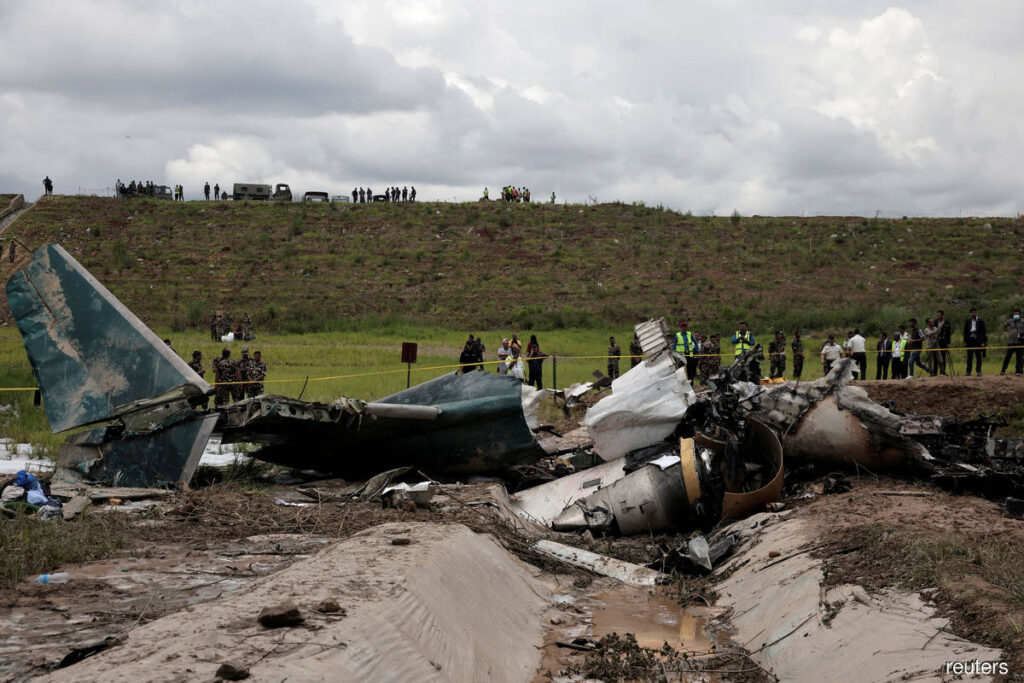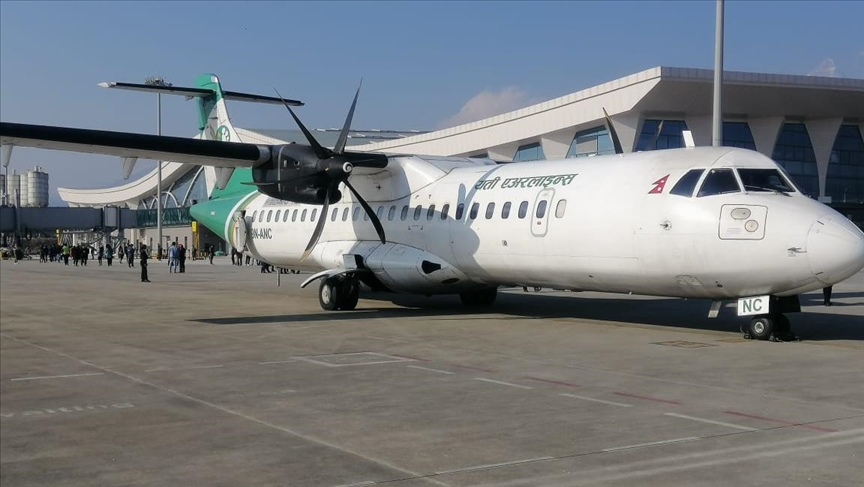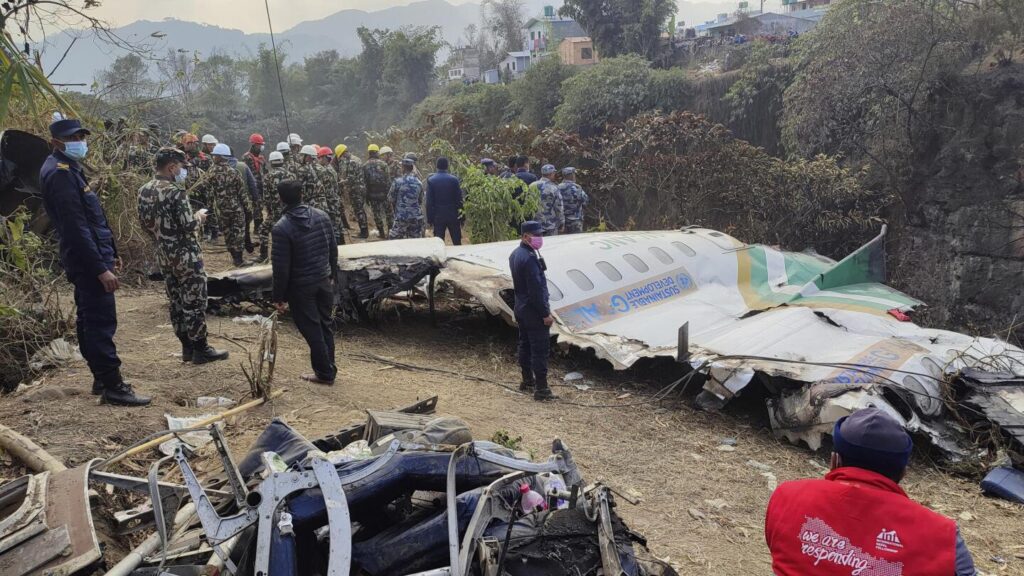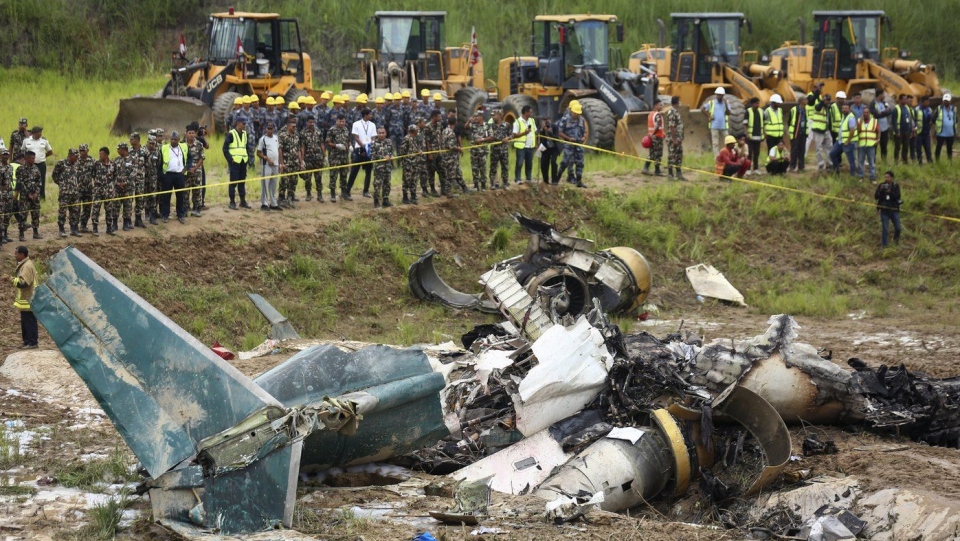On January 15, 2023, Nepal Plane experienced one of its deadliest aviation disasters when a Yeti Airlines ATR 72-500 aircraft crashed near Pokhara, killing all 72 people on board. This tragic event has drawn attention to the challenges faced by the aviation industry in Nepal Plane, a country known for its breathtaking but treacherous landscapes. This article explores the details of the crash, the response from authorities, and the broader implications for aviation safety in Nepal.
Details of the Crash Nepal Plane

The Flight
The Yeti Airlines flight took off from Tribhuvan International Airport in Kathmandu, Nepal Plane capital, at approximately 10:32 AM local time. The destination was Pokhara, a popular tourist destination known for its scenic beauty and proximity to the Annapurna mountain range. The aircraft, an ATR 72-500, was carrying 68 passengers and 4 crew members.
The Incident
As the plane approached Pokhara Airport, it encountered difficulties during its final descent. Eyewitnesses reported seeing the aircraft veer off course and then plummet into the Seti River gorge, just a few kilometers from the runway. The plane burst into flames upon impact, leaving no survivors.
Immediate Response
Emergency responders, including local police, army personnel, and fire brigades, rushed to the crash site. Despite their swift response, the impact and subsequent fire left little hope for finding survivors. The recovery operation was challenging due to the rugged terrain and the intensity of the fire.
Investigations and Findings
Initial Investigations
The Civil Aviation Authority of Nepal (CAAN) immediately launched an investigation into the crash, with assistance from international aviation experts. The primary focus was on retrieving the aircraft’s black boxes—the cockpit voice recorder (CVR) and the flight data recorder (FDR)—which are crucial for understanding the events leading up to the crash.
Preliminary Findings
Preliminary findings suggested that the aircraft might have encountered technical difficulties or pilot error during the final approach. The black boxes, once recovered, were sent to the manufacturers and aviation safety experts for detailed analysis.
Aviation Challenges in Nepal

Nepal Plane unique geography, with its mountainous terrain and rapidly changing weather conditions, presents significant challenges for aviation. The country has a history of aviation accidents, often attributed to these environmental factors combined with limited infrastructure and stringent operational conditions.
Geographic and Weather Challenges
The mountainous terrain requires pilots to navigate through narrow valleys and unpredictable weather patterns. Airports like Lukla, often referred to as the world’s most dangerous airport, and Pokhara, where the crash occurred, are notorious for their difficult approaches and short runways.
Infrastructure and Operational Issues
Nepal’s aviation infrastructure, though improving, still faces limitations. Runways and navigational aids are sometimes inadequate for the challenging conditions. Additionally, there are concerns about the enforcement of safety regulations and the adequacy of pilot training and maintenance procedures.
Regulatory and Safety Measures
Civil Aviation Authority of Nepal Plane (CAAN)
The CAAN is responsible for regulating and overseeing aviation safety in Nepal Plane. Following the crash, the CAAN announced a series of measures aimed at enhancing safety protocols. These included increased inspections, stricter enforcement of safety regulations, and improved training programs for pilots and maintenance crews.
International Assistance
International organizations, including the International Civil Aviation Organization (ICAO) and various aviation safety bodies, have offered assistance to Nepal Plane in improving its aviation safety standards. Collaborative efforts focus on sharing best practices, conducting safety audits, and providing technical support.
Impact on the Aviation Industry
Public Confidence
The crash has significantly impacted public confidence in Nepal Plane aviation sector. With tourism being a vital part of the economy, maintaining a safe and reliable air transport system is crucial. Airlines operating in Nepal are now under increased scrutiny, and there is a concerted effort to reassure passengers about the safety of air travel in the country.
Economic Implications
The aviation industry in Nepal Plane is a critical component of its economy, facilitating tourism and trade. The crash and its aftermath have economic implications, including potential declines in tourism revenue and increased costs associated with implementing enhanced safety measures.
Support for Victims’ Families

Immediate Assistance
In the wake of the crash, Yeti Airlines and the Nepalese government provided immediate assistance to the families of the victims. This included financial compensation, counseling services, and support with funeral arrangements.
Long-term Support
Efforts are also being made to provide long-term support to the victims’ families. This includes educational scholarships for children who lost parents in the crash, as well as ongoing counseling and financial assistance programs.
Future Steps and Improvements
Enhancing Safety Protocols
In response to the crash, there is a renewed focus on enhancing safety protocols across the aviation sector in Nepal Plane. This involves upgrading infrastructure, implementing advanced navigational aids, and ensuring rigorous adherence to safety regulations.
Training and Capacity Building
Improving the training and capacity of aviation professionals is another critical area of focus. Enhanced training gengtoto programs for pilots, air traffic controllers, and maintenance personnel are being developed, incorporating international best practices and standards.
International Collaboration
Continued collaboration with international aviation safety organizations is essential for Nepal Plane to improve its aviation safety record. Joint initiatives, such as safety audits and technical assistance programs, are vital for identifying and addressing gaps in the current system.
Conclusion
The tragic plane crash near Pokhara has highlighted the challenges and risks associated with aviation in Nepal Plane. As the country mourns the loss of 72 lives, there is a collective resolve to improve aviation safety and prevent such incidents in the future. Through enhanced safety protocols, rigorous training, and international collaboration, Nepal Plane aims to build a safer and more reliable aviation sector. This tragedy serves as a poignant reminder of the importance of continuous improvement and vigilance in ensuring the safety of all who travel by air.
Read More Article About “Marília Mendonça: The Queen of Brazilian Sertanejo“

